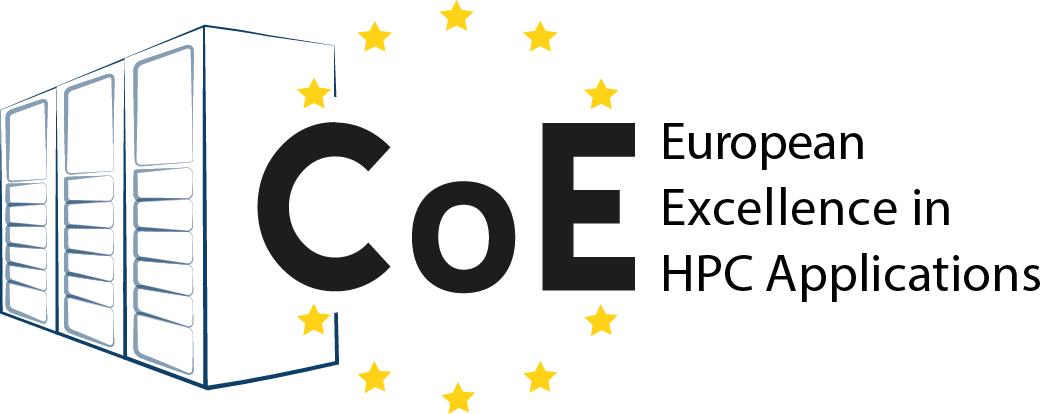NAFEMS 2021 World Congress
In the last week of October, nearly 950 participants from industry and academia gathered for the International Association for the Engineering Modeling, Analysis and Simulation 2021 World Congress (NWC21). Originally planned as a hybrid event, all programming unfortunately had to be shifted online. However, this year’s Congress was also held in conjunction with the 5th International SPDM (Simulation Process & Data Management) Conference, the NAFEMS Multiphysics Simulation Conference, and a dedicated Automotive CAE Symposium.
Unsurprisingly, the online and truly globally accessible conference also attracted a record breaking over 550 abstract submissions. Among those accepted, EXCELLERAT and POP Centres of Excellence gave five 20-minute presentations ranging from improving airplane simulations to improving the new user HPC experience. Throughout the week Monday – Thursday, representatives from EXCELLERAT, POP, and FocusCoE also presented more general videos and materials on current projects at their 3D interactive virtual booth. This year, we welcomed over 100 visitors to the booth, and the completely new NAFEMS World of Engineering Simulation 3D experience had up to 600 conference participants strolling the virtual exhibition hall at any given time.
Beginning on Tuesday the 26th, Ricard Borrell presented Airplane Simulations on Heterogeneous Pre-Exascale Architectures on behalf of EXCELLERAT CoE. He used the example of improved airplane aerodynamics simulations to discuss how their Alya code is preparing researchers to fully utilise the next generation of Exascale HPC systems and their heterogeneous hardware architectures. Without codes optimised like Alya, current HPC codes wouldn’t be capable of running in parallel on different types of processors to the extent that new Exascale systems will require. Thus, they would use only a fraction of the speed and processing power available at Exascale.
Continuing in this theme, Amgad Dessoky presented an overview of how the EXCELLERAT Centre of Excellence is Paving the Way for the Development to Exascale Multiphysics Simulations including the 6 computational codes they are optimizing for Exascale: Nek5000, Alya, AVBP, TPLS, FEniCS, and Coda. Using automotive, aerospace, energy, and manufacturing industrial sector use cases, he described the common challenges for developers and potential users of HPC Exascale applications. Participants were also invited to discuss how EXCELLERAT can best support the needs and required competencies of the Multiphysics simulation community going forward.
One of these required competencies is the ability to understand and improve the performance bottlenecks of parallel codes. In answer, Federico Panichi presented a talk titled Improving the Performance of Engineering Codes on behalf of the Performance Optimisation and Productivity (POP) Centre of Excellence. The set of hierarchical metrics forming the POP performance assessment methodology cuts out the time-consuming trial and error process of code optimisation by identifying issues such as memory bottlenecks, communication inefficiencies, and load imbalances. He demonstrated with the example of optimised engineering codes how POP services could enable any EU or UK academic or commercial organisation to speed up time to solution, solve larger, more challenging problems or reduce compute costs free of charge.
On Wednesday the 27th, presentations continued with Christian Gscheidle representing EXCELLERAT and A Flexible and Efficient In-situ Data Analysis Framework for CFD Simulations. Because Computational Fluid Dynamics (CFD) simulations Increasingly produce far more data than they can save in real time, researchers often see final analysis results and lose the intermediate data. It also means that they must wait until the full simulation runs before being able to make any improvements. In contrast, he presented the EXCELLERAT tool that uses machine learning to perform in-situ analyses on data produced during large-scale simulations in real time so that researchers can see intermediate results and early trends. Using this tool, an example HVAC duct from an automotive set up use case showed a reduced compute time because researchers were able to abort simulations with unwanted behaviour.
Wrapping up the presentations, Janik Schüssler presented Creating Connections: Enabling High Performance Computing for Industry through a Data Exchange & Workflow Platform on behalf of EXCELLERAT. Continuing in the theme of the previous presentations, this tool addresses the needs and competencies of current and potential HPC users, albeit in a slightly different way. As discussed in the talk, where other tools or trainings work to develop HPC competencies in the user, this prototype platform would bring HPC to the user both in terms of competencies and location. The user would be able to remotely access clusters (currently both HLRS Hawk and Vulcan) from anywhere using an authorised device. Additionally, they would be able to run simulations in the web front end without any command line interactions, which can have a steep learning curve for new users. Ultimately, the savings in logistical coordination, travel, and training time would drastically lower the entry barrier to HPC use.
If you’re interested in following how EXCELLERAT, POP, and all the European HPC Centres of Excellence are preparing us for Exascale and improving the HPC user experience, sign up for our newsletters:
Focus CoE Newsletter (for coverage of all European HPC CoEs)



